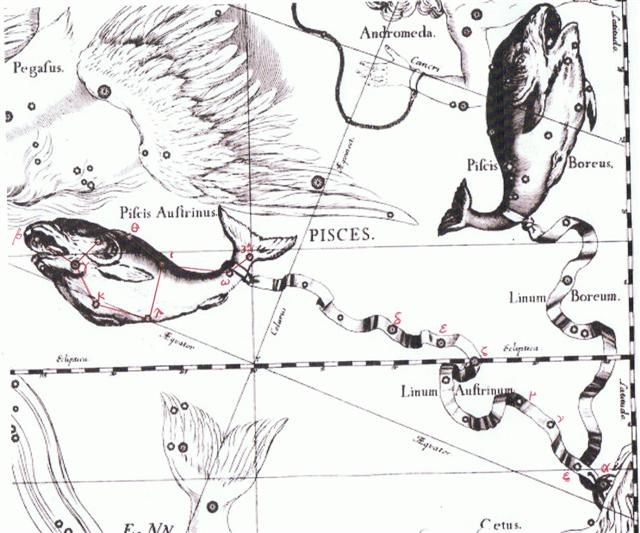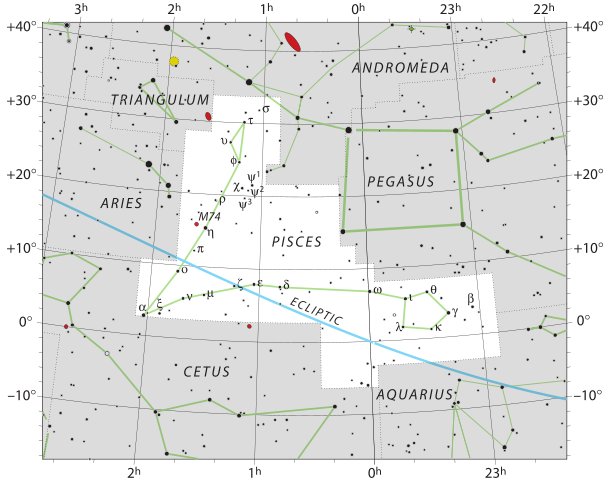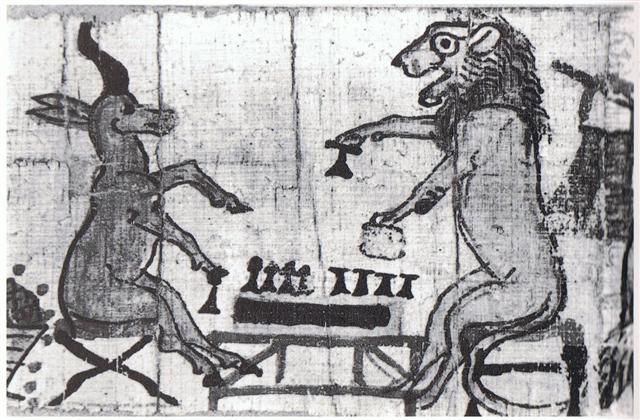I discover that Metoro had said e haki puo
at Aa6-21, which could suggest that in June
21 (6-21) the holes
for entrance and exit might have
been covered up
(shut up, closed, sealed):
|
e haki
puo |
|
 |
|
Aa6-21 (437, 1101) |
Puo.
(Also pu'a);
pu'o nua, one who covers himself
with a nua (blanket), that is
to say, a human being. Vanaga. 1. To
dress, to clothe, to dress the hair;
puoa, clothed; puoa tahaga,
always dressed. 2. To daub, to
besmear (cf. pua 2); puo
ei oone, to daub with dirt, to
smear. 3. Ata puo, to hill up
a plant. Churchill.
... The Celtic
year was divided into two halves
with the second half beginning in
July, apparently after a seven-day
wake, or funeral feast, in the
oak-king's honour ...
We can recognize the puo
glyph type from the variant at
the end of side
b on the G tablet:
|
 |
15
|
 |
5
|
 |
|
Gb8-8 |
Gb8-24 (465) |
Gb8-30 |
|
May 1 (121) |
MARCH 14 (π) |
MARCH 20 (*364) |
|
Bharani (*41.4) |
Menkhib (*57.6) |
Hyadum I (*63.4) |
|
16 |
7 |
Prompted by the word haki (certain)
I investigate further, because we
need firm and reliable (certain)
places:
|
388
|
ko te
tupu haki |
255
|
e haki
pu |
19 |
436
|
e haki
puo |
233
|
|
 |
 |
 |
|
Ab5-65 (389, 1059) |
Ab8-65 (645, 1315) |
Aa6-21 (437, 1101) |
|
664 |
670 |
Beyond the Garden of Eden came the
cold time when Man covered himself up, in
contrast to the season when the Mouth (vaha)
of the Southern Fish (Piscis
Austrinus) had been open, viz.
at γ Piscium and when the Sun had
been at the
Fig Tree:

|
manu rere |
kua moe koia i
toona tahoga kua pu |
haki pu |
ka pu era |
|
Tahoga.
Figurine made of
wood or of stone, in
the shape of a
heart, which used to
be worn on the
chest. Vanaga.
Spherical pendant of
wood worn around the
neck. Fischer.
Kaona, a
Hawaiian word that
means 'veiled
meaning or
symbolism'.
D'Alleva.
... His
temple-palace
was composed of
four radiant
apartments: one
toward the east,
yellow with
gold; one
towards the
west, blue with
turquoise and
jade; one toward
the south, white
with pearls and
shells; one
towards the
north, red with
bloodstones -
symbolizing the
cardinal
quarters of the
world over which
the light of the
sun holds
sway. And it was
set wonderfully
above a mighty
river that
passed through
the midst of the
city of
Tula;
so that every
night, precisely
at midnight, the
king descended
into the river
to bathe; and
the place of his
bath was called
'In the Painted
Vase', or 'In
the Precious
Waters'
...
... In China,
with
Capricornus,
Pisces, and a
part of
Sagittarius, it
[Aquarius]
constituted the
early Serpent,
or Turtle,
Tien Yuen;
and later was
known as
Hiuen Ying,
the Dark Warrior
and Hero, or
Darkly
Flourishing One,
the Hiuen Wu,
or Hiuen
Heaou, of
the Han dynasty,
which Dupuis
gave as Hiven
Mao. It was
a symbol of the
emperor
Tchoun Hin,
in whose reign
was a great
deluge;
but after the
Jesuits came in
it became
Paou Ping,
the Precious
Vase. It
contained three
of the sieu, and
headed the list
of zodiac signs
as the Rat,
which in the far
East was the
ideograph for
'water', and
still so remains
in the almanacs
of Central Asia,
Cochin China,
and Japan
...
|
 |
 |
 |
 |
|
Ca13-7 (350) |
Ca13-8 (13 * 27) |
Ca13-9
(*272 → 2 * 136) |
Ca13-10
(*273 → 3 * 91) |
|
CLOSE TO THE FULL
MOON: |
|
DEC 31 (365) |
JAN 1 |
2 |
3 (*288) |
|
March 5 (430 - 366 =
64) |
6 (65 = 365 - 300) |
7 (31 + 28 + 7 = 66) |
8 |
|
'Febr 7 (38 + 365 =
403) |
8 (404 - 39 = 365) |
9 (40 = 366 - 326) |
10 |
|
Al Fargh al
Mukdim-24 (Fore
Spout) /
Purva Bhādrapadā-26
(First of the
Blessed Feet) /
House-13 (Pig)
SCHEAT PEGASI =
β
Pegasi,
π
Piscis Austrini
(349.3),
κ
Gruis (349.4),
MARKAB PEGASI =
α
Pegasi
(349.5)
*308.0 = *349.4 -
*41.4 |
23h (350.0 = 167.4 +
182.6)
υ, θ Gruis (350.0),
π Cephei (350.6), ι
Gruis (350.9) |
SIMMAH = γ Piscium
(351.7) |
φ Aquarii (352.0), ψ
Aquarii (352.4), χ
Aquarii (352.6), γ
Tucanae (352.8) |
 |
|
CLOSE TO THE SUN: |
|
JULY 2 |
3 (184 = 248 - 64) |
4 (185 = 225 - 40) |
5 |
|
Sept 4 (613 - 366 =
247) |
5 (248 = 65 + 183) |
6 |
7 |
|
11h (167.4)
χ Leonis, χ¹ Hydrae
(167.1), χ² Hydrae
(167.3)
*167.4 - *41.4 =
*126.0 |
AL SHARAS (The Ribs)
=
β
Crateris
(168.6) |
Al Zubrah-9 (Mane) /
Purva Phalguni-11
(First Reddish One -
Fig Tree)
ZOSMA (Girdle, not
Belt) = δ Leonis
(169.2),
COXA (Hips) = θ
Leonis (169.4)
*169.4 - *41.4 =
*128.0 |
φ
Leonis (170.0),
ALULA
(First Spring of the
Gazelle) = ξ, ν
Ursae Majoris
(170.5),
LABRUM = δ Crateris
(170.6) |
|
...
God created Eve from one
of Adam's ribs and
therefore I at first
tried to translate the
female (β)
star name Al Sharas
with The Rib. Although
according to Allen this
star was plural: '...
β
... was one of Al
Tizini's Al Sharāsīf,
the Ribs, - i.e. of the
Hydra, - and the first
of the set.' Adam had,
as I remember it,
another wife before Eve,
viz. Lilith ...
...
In the hare paenga
foundation form, the
komari is cut in
stone and embedded in
the earth, the
cosmologically female
realm. Spanning above,
over and virtually into
this komari
foundation is the
ridgepole 'backbone' and
curved rafter 'ribs' of
what I surmise to be a
symbolically male form.
In short, we have a
shelter which may be
metaphorically
understood as 'the sky
father enclosing his
progeny as he embraces
the earth'. Those
progeny entered and
departed this
male/female, earth/sky
form through a low, dark
tunnel which may be
logically compared to
the birth canal ... |

|







